The Well-Tempered Ear
Classical music: With much of Wisconsin underwater from historic flooding, Britten’s opera “Noah’s Flood” seems timely. Can you think of other works inspired by floods and natural disasters?
16 Comments
By Jacob Stockinger
Right now much of Wisconsin lies underwater.
This past week has seen record-setting rain and historic flooding along with high winds and tornadoes that have left many towns and counties declared official disasters.
Then yesterday, Gov. Scott Walker declared a state of emergency for the entire state. More rain and thunderstorms are predicted for all weekend and next week.
The flooding is not on the order of the deadly and destructive wildfires out west. But the situation seems nonetheless the kind of emergency or natural disaster that usually draws some kind of attention of the national media — on a smaller scale something like Hurricane Katrina, Hurricane Harvey and Hurricane Maria that devastated respectively, New Orleans, Houston and Puerto Rico.
But this time The Ear can’t recall seeing or hearing even mentions or 10-second spot reports about the flooding of a state capital on national news programs. Can you?
New programs always seem to focus more on weather stories when they occur on the coasts and in the south. And right now the media also appear preoccupied with offering ever more words about the deaths of Senator John McCain and singer Aretha Franklin, the “Queen of Soul.”
But the situation got The Ear to thinking and searching.
Are there works of classical music inspired by flooding and other natural disasters?
And he doesn’t mean just music inspired by and celebrating calmer and less destructive water such as George Frideric Handel’s “Water Music” or Ludwig van Beethoven’s “Pastoral” Symphony or Georg Philipp Telemann’s “Ebb and Flow” Music.
One important discovery that met the criterion was the children’s opera, “Noah’s Flood,” composed by British composer Benjamin Britten (below) in the wake of his own personal and home experience with floods – as you can see in the YouTube video below.
Can you think of other works composed in response to a natural disaster?
If so, in the comment section please leave the names of the work and composer and, if possible, a link to a YouTube performance.
The Ear wants to hear.
Tags: #ArethaFranklin, #BenjaminBritten, #BritishComposer, #Children'sOpera, #EastCoast, #EbbandFlow, #FloodinginWisconsin, #GeorgeFridericHandel, #GeorgPhilippTelemann, #Gov.ScottWalker, #GreatBritain, #HurricanceMaria, #HurricaneHarvey, #HurricaneKatrina, #JohnMcCain, #LudwigVanBeethoven, #NationalMedia, #NaturalDisaster, #NewOrleans, #NewsProgram, #Noah'sFlood, #PacificNorthwest, #PersonalExperience, #PuertoRico, #QueenofSoul, #StateofEmergency, #StateofTexas, #StateOfWisconsin, #TheBible, #TheSouth, #WaterMusic, #WeatherPredictions, #WestCoast, #YouTubevideo, Arts, Baroque, Beethoven, Bible, Britain, Britten, Chamber music, children, choral music, Classical music, composer, conductor, counties, county, deadly, death, disaster, Early music, East Coast, emergency, England, flood, flooding, George Frideric Handel, Gov. Scott Walker, governor, Houston, Hurricane, Hurricane Harvey, Hurricane Katrina, Hurricane Maria, Jacob Stockinger, Louisiana, Ludwig van Beethoven, Madison, Maria, media, Music, national media, natural, natural disaster, news, Noah, opera, Orchestra, Pacific Northwest, PastoralSymphony, prediction, program, Puerto Rico, queen, rain, Scott Walker, soul, south, storm, story, symphony, Texas, thunderstorm, tornado, towns, UK, underwater, United States, University of Wisconsin-Madison School of Music, University of Wisconsin–Madison, vocal music, weather, week, weekend, west coast, wildfire, Wind, Wisconsin, YouTube
Classical music: What composers and what pieces give you shelter and sanctuary during troubled times?
4 Comments
By Jacob Stockinger
A week ago, The Ear went to the inspired all-Mozart program given by the University of Wisconsin-Madison’s Pro Arte Quartet with guest cellist Jean-Michel Fonteneau (below center) and guest clarinetist Alicia Lee (below right), who was making her debut as a new UW faculty member.
He expected a fine performance and he was not disappointed. Indeed, he shares the same very positive reactions that critic John W. Barker expressed in his review for this blog. Here is a link to that review:
But something else happened too.
The sublime music of Mozart (below) – especially the Larghetto slow second movement of the late Clarinet Quintet, K. 581, but also the other movements and the String Quartet in G Major, K. 387 -– took The Ear into another world, into a parenthesis in time.
(You can hear a live performance in Japan by Yo-Yo Ma and others in the Larghetto movement, plus the rest of the Clarinet Quintet, in the YouTube video at the bottom.)
For a brief time – perhaps a total of about 80 or 90 minutes – The Ear was totally transported. He temporarily blocked out the political strife in Washington, D.C. and the Trump White House; the government turmoil here in Madison and around the world; and the terrible, deadly natural disasters of floods, hurricanes and wildfires in the U.S. and elsewhere around the globe.
He just let the transcendent music and the performances wash over him, refreshing him with their beauty before he reemerged onto the street and into the painful reality of current events after the concert ended.
So The Ear offers a deeply felt thank you to the performers for planning and playing such a timely and therapeutic program. He needed that more than he knew. And he hopes more such concerts are in store. The times demand such balm, not as escapism but as a reminder of great good things that endure.
So here is The Ear’s question: What other composers and what other pieces or works do you find offer the same kind of sanctuary or shelter?
Leave a COMMENT with a link to a performance on YouTube if possible.
Tags: African-American music, Alicia Lee, America, Arts, Asia, balm, beauty, blog, Campus, Cello, Chamber music, clarinet, Clarinet Quintet, Classical, Classical music, composer, critic, curent events, current, current events, D.C., dead, deadly, debut, Donald Trump, endure, escape, escapism, event, faculty, flood, global, globe, good, good thing, good things, government, great, Hurricane, inspiration, inspired, Jacob Stockinger, Japan, Jean-Michel Fonteneau, John W. Barker, late, live, Madison, Madison Symphony Orchestra, movement, Mozart, Music, natural disaster, New York City, parenthesis, performance, piece, planning, play, political, Politics, positive, President, President Donald Trump, President Trump, Pro Arte Quartet, program, Quartet, quintet, review, sanctuary, shelter, strife, String quartet, sublime, terrible, therapeutic, therapy, time, timely, times, turmoil, U.S., United States, University of Wisconsin-Madison School of Music, University of Wisconsin–Madison, US, video, Viola, Violin, Washington, White House, wildfire, Wolfgang Amadeus Mozart, work, world, Yo-Yo Ma, YouTube
Classical music: Today is Sept. 11. What music would you listen to, to commemorate the terrorist attacks on that day
3 Comments
By Jacob Stockinger
The news today will be filled with Hurricane Irma, Hurricane José and Hurricane Harvey as well as the wildfires raging out west.
But today is also Sept. 11, 2017.
That makes today the 16th anniversary of the deadly terrorist attacks on the World Trade Center in the Twin Towers in New York City (below top); the Pentagon in Virginia, close to Washington, D.C. (below middle); and that thwarted hijacking of United Airlines Flight 93, which passengers forced to crash in a field in Pennsylvania (below bottom) before it could reach the Capitol or White House.
During the September 11 attacks, 2,996 people were killed and more than 6,000 others wounded. These immediate deaths included 265 on the four planes (including the 19 terrorists), 2,606 in the World Trade Center and in the surrounding area, and 125 at the Pentagon.
A lot of music could be played to mark the occasion.
At bottom, in a YouTube video, is “On the Transmigration of Souls,” a piece by the American composer John Adams that was commissioned by the New York Philharmonic specifically to mark the event. It ended up winning a Pulitzer Prize.
It uses both an orchestra and a chorus, and it incorporates voices and sounds, actual recordings and tapes, from the events of that day. It all makes for a moving tribute.
But other music, in smaller forms and in many other styles, would also be appropriate.
What piece would you suggest?
Tags: 9-11, 9/11, American, anniversary, appropriate, Arts, Capitol, choral music, chorus, Classical music, commission, Compact Disc, composer, crash, D.C., deadly, death, Flight 93, Harvey, hijacking, Hurricane, Hurricane Harvey, Hurricane Irma, Hurricane José, Irma, Jacob Stockinger, Madison, Music, New York City, news, On the Transmigration of Souls, Orchestra, Pennsylvania, Pentagon, Pulitzer Prize, recording, reports, Sept. 11, soul, symphony, tape, terror, terrorism, tourist attack, tribute, Twin Towers, United Airlines, United States, University of Wisconsin-Madison School of Music, University of Wisconsin–Madison, Viola, Violin, Virginia, voices, Washington, west, White House, wildfire, Wisconsin, World Trade Center, wounded, YouTube
Classical music: The UW Concert Choir, Choral Union and Symphony Orchestra will perform world premieres, local premieres and new music in three concerts this weekend
1 Comment
By Jacob Stockinger
The Ear has received the following messages from UW composer Laura Schwendinger and from Beverly Taylor, the director of choral activities at the University of Wisconsin-Madison School of Music who is also the assistant conductor and chorus director of the Madison Symphony Orchestra:
Writes conductor Beverly Taylor: This is a busy and musically fascinating weekend for me coming up.
On Friday night at 8 p.m. in Mills Hall, there is a special concert by the Concert Choir (below) on the subject of Art Born of Tragedy, with the acclaimed guest cellist Matt Haimovitz.
Tickets are $15, $5 for students. For more information about tickets as well as the performers and the program, go to:
http://www.music.wisc.edu/event/uw-concert-choir-4-matt-haimovitz/
Then in Mills Hall at 8 p.m. on Saturday night and at 7:30 p.m. on Sunday night, there are two performances of When Lilacs Last in the Dooryard Bloomed by the 20th-century composer Paul Hindemith by the UW Choral Union and the UW Symphony Orchestra (below). It is a work that to my knowledge has never been performed in Madison.
Tickets are $15, $8 for students. For more information about obtaining tickets and about the concert, visit:
http://www.music.wisc.edu/event/uw-choral-union-uw-symphony-orchestra/
Here is more information about the events:
CONCERT CHOIR
The Concert Choir performance explores in music of several centuries the theme of “Art Born of Tragedy” — how outside events can be the spark that causes the creation of works of substance that range from the gentle and comforting to rage and despair.
We will sing music from the Renaissance: part of the Thomas Tallis’ “Lamentations of Jeremiah (on the ancient destruction of Jerusalem),” and a John Wilbye madrigal “Draw on Sweet Night for a Broken Heart.”
We will present three works from modern composers: one is a world premiere by the prize-winning composer Laura Schwendinger (below top), my colleague at the UW-Madison, for viola — played by Sally Chisholm (below bottom) of the UW Pro Arte Quartet — and wordless chorus. It is called “For Paris” in memory of those killed in the Paris terrorist bombings of 2015.
(Adds composer Laura Schwendinger: “The viola starts this short work by referencing only for a moment the merest idea of a ‘musette song,’ one that might be heard on an evening in a Paris cafe. The choir enters with a simple refrain that repeats again and again, each time with a little more material, as an unanswered question of sorts. Each time the viola reenters the texture, the music becomes more pressing in a poignant manner, until it arrives in its highest register, only to resolve with the choir as it quietly acquiesces in the knowledge that the answer may not be known.”)
We will present a short “O vos omnes” (O you who pass by) written by Pennsylvania composer Joseph Gregorio (below), composed in memory of a Chinese girl hit by a car and left to die.
The third piece is a reprise of “Après moi, le deluge” by Luna Pearl Woolf (below top), which we premiered and recorded 11 years ago. We are lucky to have back the wonderful internationally known cellist Matt Haimovitz (below bottom), who premiered this work with it. The text, written by poet Eleanor Wilner, mixes the Noah story with the Hurricane Katrina disaster.
The term “Après moi, le deluge” is a term attributed to Louis XV or his mistress Madame Pompadour, and means “after me the flood” — referring either to the chaos after his reign, or that what happens afterword bears no importance for him.
The work has four different moods like a symphony — with strong themes at the start and cries for help, followed by the slow movement despair, a scherzo-like depiction of havoc, and a final movement that is like a New Orleans funeral, upbeat and Dixieland.
Throughout the program we also present spirituals that depict loneliness or salvation from trouble.
UW CHORAL UNION
In certain ways, When Lilacs Last in the Dooryard Bloomed resembles the Concert Choir concert in that it contains a number of moods and styles as well, under a dark title. The subtitle of the work is “a Requiem for Those We Love.”
It was commissioned by the great choral and orchestral conductor Robert Shaw as a tribute to President Franklin Delano Roosevelt on his death and the train ride that carried him from Warm Springs, Georgia, to Washington, D.C.
The text that Paul Hindemith (below top) chose is by Walt Whitman (below bottom), who wrote his poem on the death of Abraham Lincoln, and the funeral train from Washington, D.C., to Springfield, Illinois.
Whitman’s grief is combined with pride and joy in the countryside that the train traverses, and his feelings find an outlet in the thrush that sings out its song. His sense of a sustaining universe is a contrast to his depiction of the despair and ravages of the Civil War.
Hindemith’s calling the work a “Requiem for Those We Love,” puts it, like the Brahms’ “German” Requiem, into a class of non-liturgical requiems — that is, the texts are not those that are part of the Catholic Mass for the Dead, but are other selected texts of joy or remembrance.
Hindemith’s style can loosely be described as tonal that veers away into dissonance and returns again to the home key. The Prelude and opening movement are dark; the solo songs of baritone (James Held, below top) and mezzo-soprano (Jennifer D’Agostino, below bottom) are marvelous; the fugue on the glories of America is glorious and other sections are soft and tender. (NOTE: You can hear the orchestral prelude of the work, with composer Paul Hindemith conducting the New York Philharmonic, in the YouTube video at the bottom.)
The work is hard for both chorus and orchestra, but well worth the effort. The piece is about 80 minutes long and will be performed without interruption. It’s a work I’ve always wanted to do, having heard it performed at Tanglewood many years ago. I’m delighted to have the chance now.
Tags: 20th-century, Art, Arts, auto, baritone, Beverly Taylor, born, cafe, car, Catholic, Chamber music, chaos, China, Chinese, Choir, choral music, Choral Union, chorus, Civil War, Classical music, comfort, composer, Concert Choir, conductor, D.C., dead, despair, dissonance, Dixieland, Early music, Eleanor Wilner, FDR, Franklin Delano Roosevelt, fugue, funeral, gentle, Georgia, grief, heart, Hurricane, Hurricane Katrina, ILLINOIS, Jacob Stockinger, James Held, Jennifer D'Agostino, Jeremiah, Jerusalem, John Wilbye, Joseph Gregorio, Joy, Kartrina, lamentation, Laura Schwendinger, Lincoln, liturgical, liturgical music, Louis XV, Love, Madame Pompadour, Madison, Madison Symphony Orchestra, madrigal, mass, Matt Haimovitz, Mezzo-soprano, musette, Music, New Music, New Orleans, New York Philharmonic, Orchestra, Paris, Paul Hindemith, Pennsylvania, poet, Prelude, premiere, President, Pro Arte Quartet, rage, ravages, reign, remembrance, Renaissance, Requiem, Requiem Mass, Robert Shaw, Scherzo, song, Springfield, symphony, symphony orchestra, Tanglewood, Tanglewood Festival, terror, terrorist, Thomas Tallis, tonal, tragedy, train, United States, universe, University of Wisconsin-Madison School of Music, University of Wisconsin–Madison, UW, Viola, Violin, vocal music, Walt Whitman, Warm Springs, Washington, When Lilacs Last in the Dooryard Bloomed, Wisconsin, world premiere, YouTube
- May 2024
- April 2024
- March 2024
- February 2024
- January 2024
- December 2023
- November 2023
- October 2023
- September 2023
- August 2023
- July 2023
- June 2023
- May 2023
- April 2023
- March 2023
- February 2023
- January 2023
- December 2022
- October 2022
- September 2022
- June 2022
- May 2022
- April 2022
- March 2022
- July 2021
- June 2021
- May 2021
- April 2021
- March 2021
- February 2021
- January 2021
- December 2020
- November 2020
- October 2020
- September 2020
- August 2020
- July 2020
- June 2020
- May 2020
- April 2020
- March 2020
- February 2020
- January 2020
- December 2019
- November 2019
- October 2019
- September 2019
- August 2019
- July 2019
- June 2019
- May 2019
- April 2019
- March 2019
- February 2019
- January 2019
- December 2018
- November 2018
- October 2018
- September 2018
- August 2018
- July 2018
- June 2018
- May 2018
- April 2018
- March 2018
- February 2018
- January 2018
- December 2017
- November 2017
- October 2017
- September 2017
- August 2017
- July 2017
- June 2017
- May 2017
- April 2017
- March 2017
- February 2017
- January 2017
- December 2016
- November 2016
- October 2016
- September 2016
- August 2016
- July 2016
- June 2016
- May 2016
- April 2016
- March 2016
- February 2016
- January 2016
- December 2015
- November 2015
- October 2015
- September 2015
- August 2015
- July 2015
- June 2015
- May 2015
- April 2015
- March 2015
- February 2015
- January 2015
- December 2014
- November 2014
- October 2014
- September 2014
- August 2014
- July 2014
- June 2014
- May 2014
- April 2014
- March 2014
- February 2014
- January 2014
- December 2013
- November 2013
- October 2013
- September 2013
- August 2013
- July 2013
- June 2013
- May 2013
- April 2013
- March 2013
- February 2013
- January 2013
- December 2012
- November 2012
- October 2012
- September 2012
- August 2012
- July 2012
- June 2012
- May 2012
- April 2012
- March 2012
- February 2012
- January 2012
- December 2011
- November 2011
- October 2011
- September 2011
- August 2011
- July 2011
- June 2011
- May 2011
- April 2011
- March 2011
- February 2011
- January 2011
- December 2010
- November 2010
- October 2010
- September 2010
- August 2010
- July 2010
- June 2010
- May 2010
- April 2010
- March 2010
- February 2010
- January 2010
- December 2009
- November 2009
- October 2009
- September 2009
- August 2009
Archives
- 2,491,587 hits
Blog Stats
Recent Comments
| Brian Jefferies on Classical music: A major reass… | |
| welltemperedear on What made Beethoven sick and… | |
| rlhess5d5b7e5dff on What made Beethoven sick and… | |
| welltemperedear on Beethoven’s Ninth turns 200… | |
| Robert Graebner on Beethoven’s Ninth turns 200… |
Tags
#BlogPost #BlogPosting #ChamberMusic #FacebookPost #FacebookPosting #MeadWitterSchoolofMusic #TheEar #UniversityofWisconsin-Madison #YouTubevideo Arts audience Bach Baroque Beethoven blog Cello Chamber music choral music Classical music Compact Disc composer Concert concerto conductor Early music Facebook forward Franz Schubert George Frideric Handel Jacob Stockinger Johannes Brahms Johann Sebastian Bach John DeMain like link Ludwig van Beethoven Madison Madison Opera Madison Symphony Orchestra Mead Witter School of Music Mozart Music New Music New York City NPR opera Orchestra Overture Center performer Pianist Piano post posting program share singer Sonata song soprano String quartet Student symphony tag The Ear United States University of Wisconsin-Madison School of Music University of Wisconsin–Madison Viola Violin vocal music Wisconsin Wisconsin Chamber Orchestra wisconsin public radio Wolfgang Amadeus Mozart YouTube



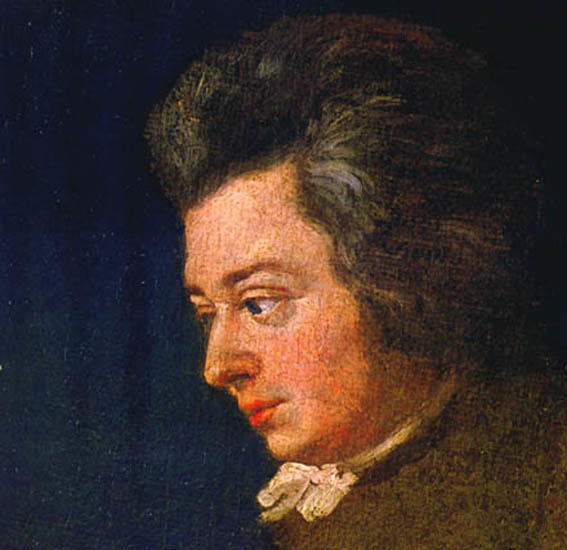



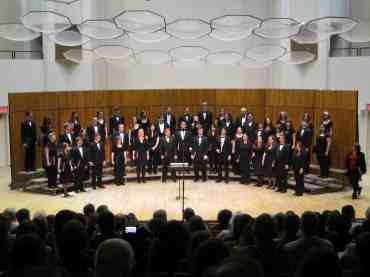
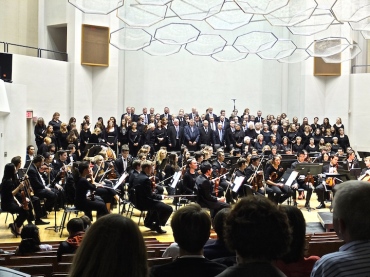
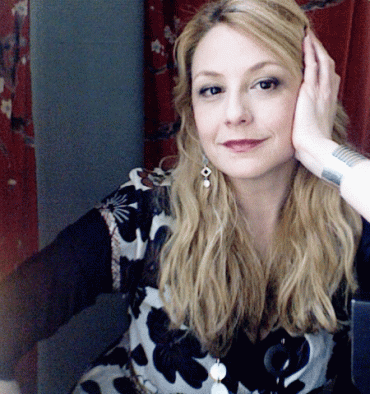
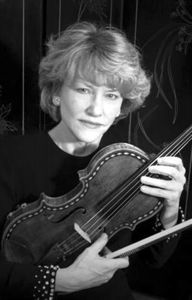
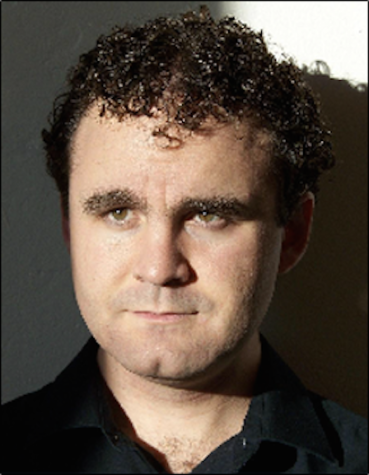
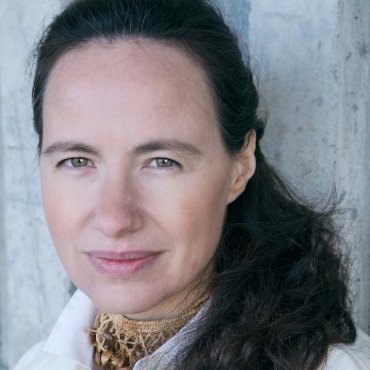
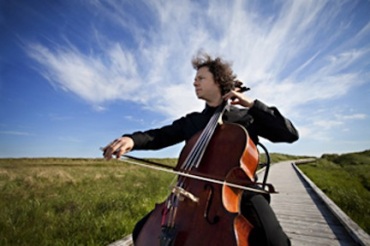
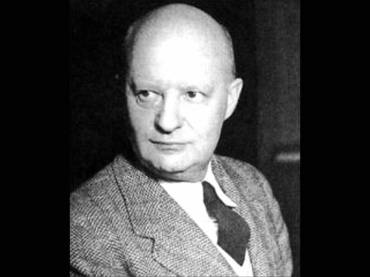
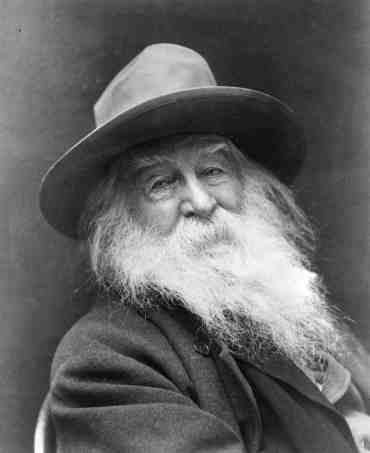
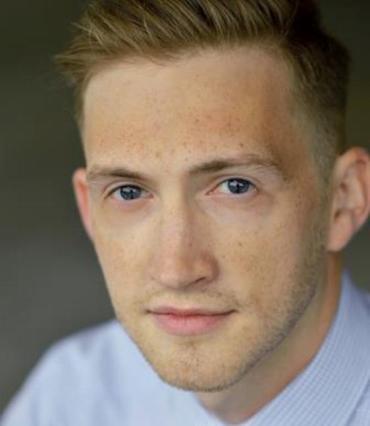
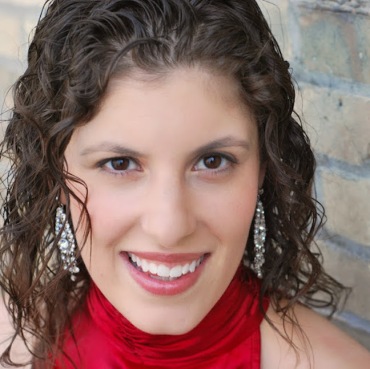
NPR names relevant classical albums in a musical Diary of the Plague Year of the pandemic, racial protests, wildfires and hurricanes
Leave a Comment
PLEASE HELP THE EAR. IF YOU LIKE A CERTAIN BLOG POST, SPREAD THE WORD. FORWARD A LINK TO IT OR, SHARE IT or TAG IT (not just “Like” it) ON FACEBOOK. Performers can use the extra exposure to draw potential audience members to an event. And you might even attract new readers and subscribers to the blog.
By Jacob Stockinger
For an unusual and difficult year, NPR (National Public Radio) and critic Tom Huizenga have found a new and unusual way to recommend this past year’s top classical music recordings.
On the “Deceptive Cadence” blog for NPR, Huizenga kept a personal month-by-month diary of “music and mayhem.”
For last February, for example, this ancient image of The Dance of Death inspired contemporary composer Thomas Adès to compose his own “Totentanz” or Dance of Death. (You can hear an excerpt from the work in the YouTube video at the bottom.)
Some of the thematically-related music is modern or contemporary, some of it is from the Baroque or Classical era.
In June, as protests against the death of George Floyd (below top) flared up and spread worldwide, NPR names a recording of the “Negro Folk Symphony” by African-American composers William Dawson and Ulysses Kay (below bottom), thereby helping to rediscover Black composers whose works have been overlooked and neglected in the concert hall and the recording studio.
Devastating wildfires on the West Coast, Presidential impeachment and hurricanes on the Gulf Coast also found their way into the choices of music to listen to.
It is an unusual approach, but The Ear thinks it works.
See and hear for yourself by going to the sonic diary and listening to the samples provided.
Here is a link to the NPR album diary: https://www.npr.org/sections/deceptivecadence/2020/12/21/947149286/music-and-mayhem-a-diary-of-classical-albums-for-a-troubled-2020
But many roads, if not all, lead to Rome, as they say.
What is also interesting is that a number of the NPR choices overlap with ones listed by music critics of The New York Times as the 25 best classical albums of 2020.
Some choices also are found on the list of the nominations for the Grammy Awards that will be given out at the end of January.
In other words, the NPR diary can also serve as yet another holiday gift guide if you have gift cards or money to buy some new and notable CDs, and are looking for recommendations.
Here is a link to the Times’ choices, which you can also find with commentary and a local angle, in yesterday’s blog post: https://www.nytimes.com/2020/12/17/arts/music/best-classical-music.html
https://welltempered.wordpress.com/2020/12/27/the-new-york-times-names-the-top-25-classical-recordings-of-2020-and-includes-sample-tracks/
And here is a list to the Grammy nominations: https://welltempered.wordpress.com/2020/11/28/for-holiday-shopping-and-gift-giving-here-are-the-classical-music-nominations-for-the-63rd-grammy-awards-in-2021/
What do you think of the NPR musical diary of the plague year?
Do you find it informative? Accurate? Interesting? Useful?
Would you have different choices of music to express the traumatic events of the past year?
The Ear wants to hear.
Share this:
Tags: #AbrahamLincoln, #African-AmericanComposer, #AlvinCole, #AmericanClassics, #AnnaClyne, #BaroqueMusic, #BerlinerBarockSolisten, #BerlinGermany, #BertrandChamayou, #Blackcomposers, #BlackMusic, #BlogPost, #BlogPosting, #BritishComposer, #BryceDessner, #C.E.P.Bach, #CarlPhilippEmanuelBach, #CarnegieHall, #CelloConcerto, #ChamberMusic, #ChoralMusic, #ChristianReligion, #ClariceJensen, #Classicalera, #ConcertHall, #ContemporaryMusic, #CoronavirusPandemic, #COVID-19, #DanceofDeath, #DavidLang, #DeceptiveCadence, #DonaldNally, #DonaldTrump, #DriftMutiply, #ElectronicMusic, #EnslavedPeople, #FacebookPost, #FacebookPosting, #FemaleComposer, #FerruccioBusoni, #FredericChopin, #FrenchMusician, #GeorgeFloyd, #GoodNight, #GrammyAward, #GrammyNominations, #GulfCoast, #HolidayGiftGuide, #HumanVoice, #iIanoConcerto, #InbalSegev, #JacobStockinger, #JesusChrist, #JonasKaufmann, #JustConstellations, #KirillGerstein, #LeopoldStokowski, #LeosJanacek, #LithuanianNationalSymphony, #LiveMusic, #LondonEngland, #LondonPhilharmonic, #MarinAlsop, #MassProtests, #MichaelHarrison, #MusicCritic, #MusicCritics, #NationalPublicRadio, #NaxosRecords, #NewMusic, #NewYorkCity, #NewYorkPhilharmonic, #NewYorkTimes, #OlegBezborodko, #OperaMusiclibretto, #OrchestralMusic, #PaulMoravec, #PhiladelphiaPennsylvania, #PianoConcertino, #PoliceShooting, #PoliticallyRelevant, #PresidentTrump, #ProtectYourselfFromInfection, #RacialJustice, #RecordedMusic, #RecordingStudio, #RoomfulofTeeth, #SanctuaryRoad, #SarahKirklandSnider, #SocialJustice, #SociallyRelevant, #SocialMedia, #SystemicRacism, #TenorSinger, #TheCrossing, #TheEar, #TheodoreRoosevelt, #ThomasAdès, #TomHuizenga, #TristanPerich, #UkrainianComposer, #UndergroundRailroad, #UnitedKingdom, #UnitedStates, #ValentinSilvestrov, #VikingurOlafsson, #VocalMusic, #WestCoast, #WilliamDawson, #WilliamGrantStill, #YouTubevideo, 2020, 2021, Abraham Lincoln, Adès, African American, Album, Alsop, Alvin Cole, American, American Classics, ancient, angle, anicent, Anna Clyne, April, Arts, audience, August, award, Bach, Baroque, Baroque music, beauty, behvaior, Berlin, Berliner Barock Solisten, Bertrand Chamayou, best, black, black music, blog, bond, British, British composer, Bryce Dessner, Busoni, C.P.E. Bach, cadence, California, call, Carl Philipp Emanuel Bach, Carnegie Hall, Catholic, cautionary, cellist, Cello, Cello Concerto, Chamber music, Child, Choir, Chopin, choral music, Christ, Christian religion, Christianity, Clarice Jensen, Classical era, Classical music, classicalmusic, Clyne, comfort, commentary, compelling, composer, Concert, concert hall, concerto, conductor, confrontation, Constellation, contemporary, coronavirus, dance, Dance of Death, David Lang, Davidsen, deals]new, death, December, Deceptive Cadence, diary, difficult, Donald Nally, Donald Trump, Drift Multiply, Early music, electronic, email, enslaved, enslaved people, ephemeral, escape, excerpt, Facebook, faith, fatal, fauna, February, Feburary, female, female composer, Ferruccio Busoni, flared, flora, folk, forward, fragility, France, Frédéric Chopin, freedom, French, George Floyd, Gerstein, gift, gift card, God, good night, Grammy, Gulf Coast, harmonie, Harrison, Holiday, holiday gift, holiday gift guide, hope, horrifying, human, human voice, Hurricane, image, impreachment, Inbal Segev, infection, inspire, Jacob Stockinger, Janacek, January, Jensen, Jesus, Jesus Christ, Jonas Kaufmann, June, Just Constellations, Kaufmann, Kirill Gerstein, l, Leopold Stokowski, Leos Janacek, life, like, Lincoln, link, Lise Davidsen, listen, Lithuania, Lithuanian National Symphony, live concert, live music, Living composer, living composers, local, London, London Philharmonic, lullaby, Marin Alsop, Masonic, mass, mayhem, me, mesmerizing, Michael Harrison, money, Moravec, Mother, motorcycle, Music, music critic, National Public Radio, nature, Naxos, Naxos Records, Negro, nerves, New Music, New York City, New York Philharmonic, New York Times, nocturnal, nocturne, nominations, November, NPR, October, Olafsson, Oleg Bezborodko, opera, oratorio, Orchestra, orchestral, pandemic, Paul Moravec, People, Perich, personal, Philadelphia, Pianist, Piano, Piano Concertino, planet, poetic, police shooting, Politics, positive, post, posting, precise, precision, President, President Trump, programming, protect, Protect Yourself From Infection, protest, race, racial justice, racism, rally, reality, recorded music, recording, recording studio, rediscover, relevant, Religion, repetition, response, Revelation, rising, Roomful of Teeth, sanctuary, Sanctuary Road, Sarah Kirkland Snider, September, share, signature, Silvestrov, sing, singer, smart, smooth, social justice, social media, solitude, sonic, sorrow, soundtrack, spread, statues, studio, sweet, symphony, systemic racism, tag, tangy, tenor, terminal, test, texture, The Crossing, The Ear, thematic, Theodore Roosevelt, Thomas Ades, thrill, times, Tom Huizenga, top, Totentanz, traditional, traumatic, trial, Tristan Perich, troubled, U.K., Ukraine, Ukrainian, Ukrainian composer, Ulysses Kay, Underground Railroad, unite, United Kingdom, United States, unusual, Valentin Silvestrov, Vikingur Olafsson, Violin, violinist, vocal music, voice, west coast, wildfire, William Dawson, William Grant Still, Wisconsin, witty, woman, work, worldwide, year, yesterday, YouTube